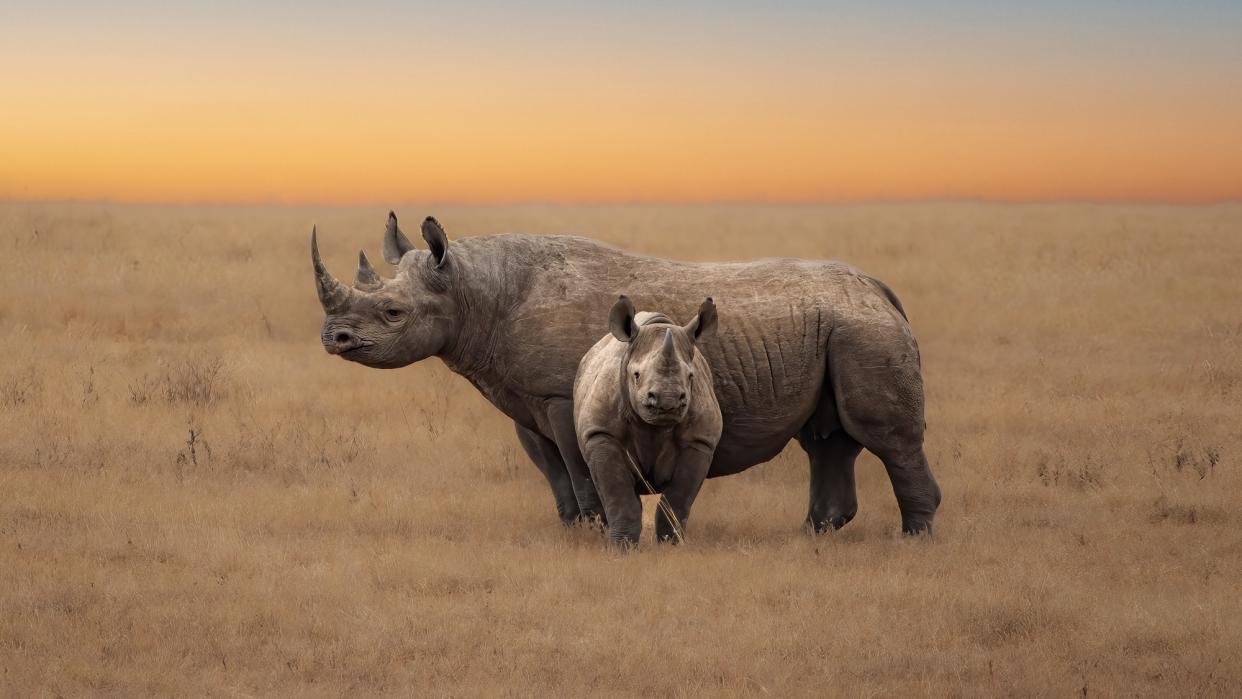Species currently on the verge of extinction

The world is undergoing its sixth mass extinction and a number of species are at risk. If climate change isn't appropriately addressed, some wildlife could be forever lost. Here's a look at some of the species on the chopping block.
Rafflesia
The rafflesia species is the largest flower on the planet and is native to Southeast Asia. The parasitic plants are sometimes called "corpse flowers" because of their pungent odor that's used to attract pollinators. A study co-authored by botanists from the University of Oxford's Botanic Garden and the University of Philippines Los Baños detailed that 60% of the known species of the plant are at a "severe risk of extinction."
That said, only one species is listed on the International Union for Conservation of Nature's (IUCN) Red List, which tracks the global conservation statuses of species. "Plants are the foundation for the habitats in which animals thrive," Dr. Chris Thorogood, co-author of the study and the Oxford Botanic Garden’s deputy science head, told ABC News. "The threat faced by Rafflesia is an important reminder that it's not just animals that are in peril," he said, adding that his hope is that the "world's largest flowers will be a powerful new icon for plant conservation."
Jaguars
Jaguars, especially those in the Amazon rainforest, have been facing difficulties due to climate change and human development. The animals require large areas of land to survive, but deforestation, wildfires and illegal poaching have resulted in habitat loss. The species is currently listed as near-threatened as its numbers have begun to decline.
"As jaguars prefer dense, undisturbed forests away from human settlements and roads, the amount of suitable habitat is in steep decline," explained Global Conservation. "It is estimated that they have been extirpated from around 55% of their historical range."
Rhinos
Rhinos have been an endangered species since the 20th century. The subspecies of Black rhinos, Javan rhinos, Northern white rhinos, and Sumatran rhinos are all critically endangered. This is largely due to high levels of poaching as well as climate change. During the 20th century, there were approximately 500,000 rhinos in Asia and Africa. At the end of 2022, however, there were approximately 27,000 in total. The Javan and Sumatran species of rhino are the most endangered, with under 100 left of each, according to the International Rhino Foundation.
The good news is that these numbers are beginning to slowly crawl up after years of stagnation. "With this good news, we can take a sigh of relief for the first time in a decade," Dr. Michael Knight, chair of the International Union for Conservation of Nature's rhino group, told The Guardian. The increase is largely due to conservation efforts dedicated to creating new rhino communities.
Orangutans
All three species of orangutans are listed as endangered, largely due to habitat loss. The population of Bornean orangutans has decreased "more than 50% over the past 60 years, and their habitat has declined by over 80% in the past 20 years," according to the Smithsonian's National Zoo and Conservation Biology Institute. Approximately 13,800 and 800 Sumatran and Tapanuli orangutans remain, respectively.
The decline can be attributed to the "unsustainable practice of timber extraction in Indonesia and Malaysia," as well as "the illegal pet trade … in Southeast Asia," a region where baby orangutans make popular companions, the Smithsonian added. The animals are also being impacted by wildfire smoke, which is causing them to "move around less to conserve energy," and "take on the equivalent of a human smoker's hack," said Wendy Erb, a postdoctoral associate at the Cornell Lab of Ornithology, per Phys.org.
Baobab trees
The African baobab tree, often identified by "a tangle of scraggly branches [that] extends from the tree's top like electrocuted hair," has suffered due to warming temperatures, per National Geographic. The trees are also a keystone species, meaning they're integral to their ecosystem and their loss can alter the whole environment.
Of the baobab trees, the Adansonia perrieri is at the highest risk of extinction; only about 200 trees remain. The species is threatened by both heat and deforestation. However, scientists are assessing whether the tree is capable of adapting to the changing climate. "We make sure we're collecting seeds for reforestation under dramatic climate changes," Nisa Karimi, botanist and evolutionary biologist at the University of Wisconsin-Madison, told National Geographic.

